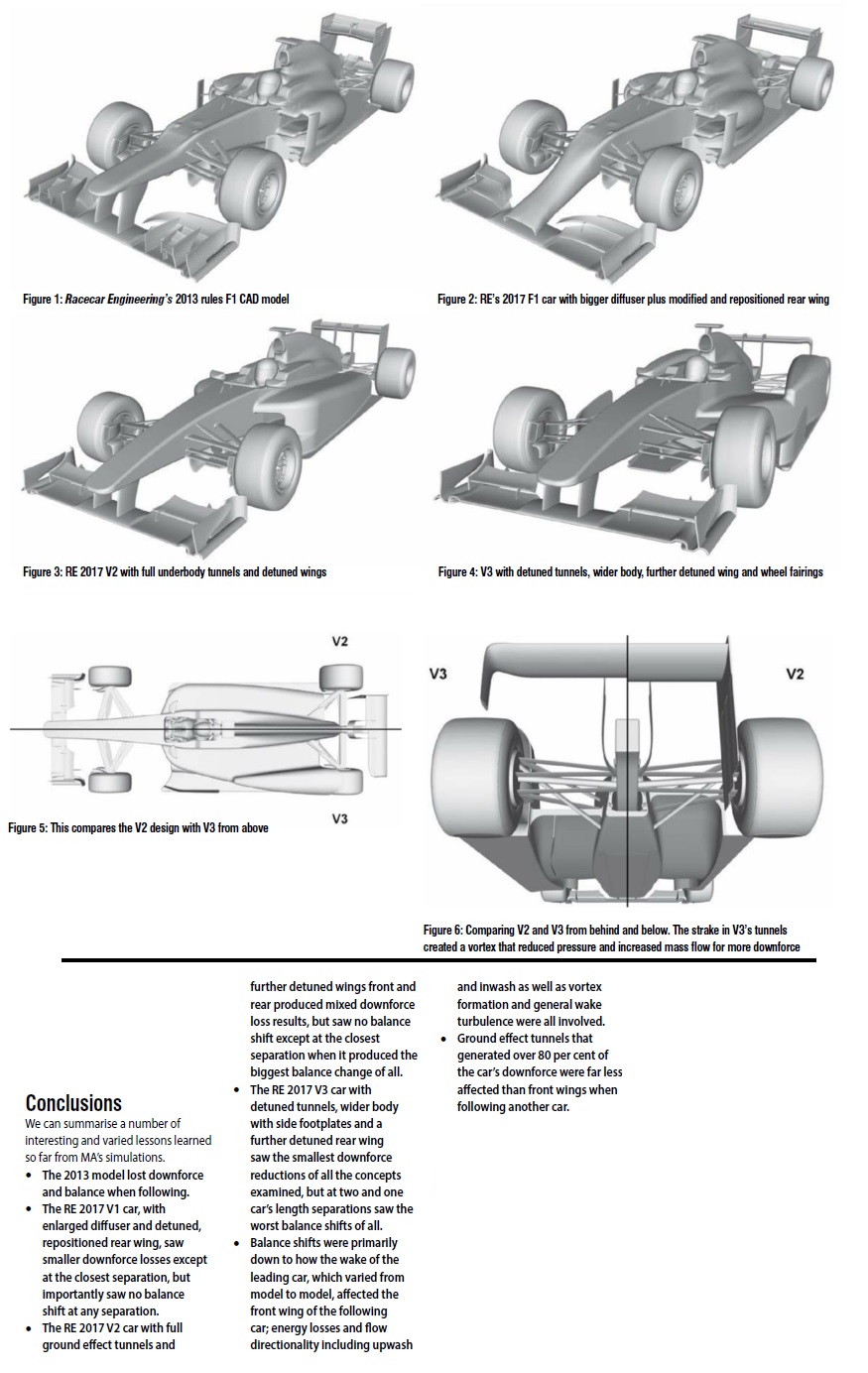Just_a_fan wrote: ↑28 Dec 2018, 23:07
Quick question: what effect would banning the Y250 vortex have on aero performance? Would a ban improve following, for example?
An extract from Nakagawa's (Toyota F1) paper in SAE on the Y250 vortex.
Managing the front-wheel wake has been a constant challenge in F1 aerodynamic development since the 1980s, as the rotating wheels create the largest disturbances acting on the car and can thus reduce the effects of downstream aerodynamic devices. To minimize this potentially detrimental effect, the wheel wake must be well managed using aerodynamic devices on the chassis side. This was done using devices called turning vanes (TV) and bargeboards (BB) situated between the front wheel and the sidepod for the 2008 car as in Figure 3. These devices produce strong downwash flow to feed energized air under the floor, as well as expelling the front-wheel wake outboard so that the underfloor flow can be kept undisturbed. Meanwhile, the front-wheel wake of the 2009 car had to be managed differently, since no such devices existed on the 2009 car, owing to the restricted area in the regulation box. It turns out that the vortices generated by the inboard tips of the front wing flaps, so-called Y250 vortices, became prominent and became a major target of the development...
...Figure 21 compares similar measurements before and after the 2009 regulation change. For the 2008 car, there are two strong vortical flows, generating downwash flows. The top vortex from the turning vane travels outboard downstream and the vortex from the bargeboard travels through the undercut area of the sidepod. On the other hand, in 2009, the nominal vortical structure was the flap vortex. It must be remembered that the turning vane vortices were misaligned with the Y250 vortex. In fact, it was still an early stage of the development when this test was conducted, and thus, these positions were not optimized. Later it will be shown that these turning vane vortices merge with the Y250 vortex. It is also seen that the trailing vortices generated on top of the bargeboards flow through the undercut areas, which effectively seals the underfloor flow to maintain the negative pressure on the floor. This effect can be seen for both cars.
So, to some end the Y250 is less necessary now than in 2009 as the bargeboards and vanes around the floor are so much bigger since the 2017 rule change - essentially allowing teams even more freedom than pre-2008 to generate outwash and vortical flow between the wheels and underbody - but as it's there and so helpful teams will continue to use it.
I can't think of a way to ban the Y250 per se (it was unintended in 2009 anyway)... you could regulate out the means of generating it - like saying the wing elements have to blend into the neutral wing. As to the effect of losing it... some downforce loss around the front of the floor, and depending how it's removed, a drag reduction also. I can't say for sure how it would affect following, likely it would improve things a bit because part of the effect of a wake will be a weakening of pressure differences on the following car... I doubt it would be a significant impact, but all these little things add up.


